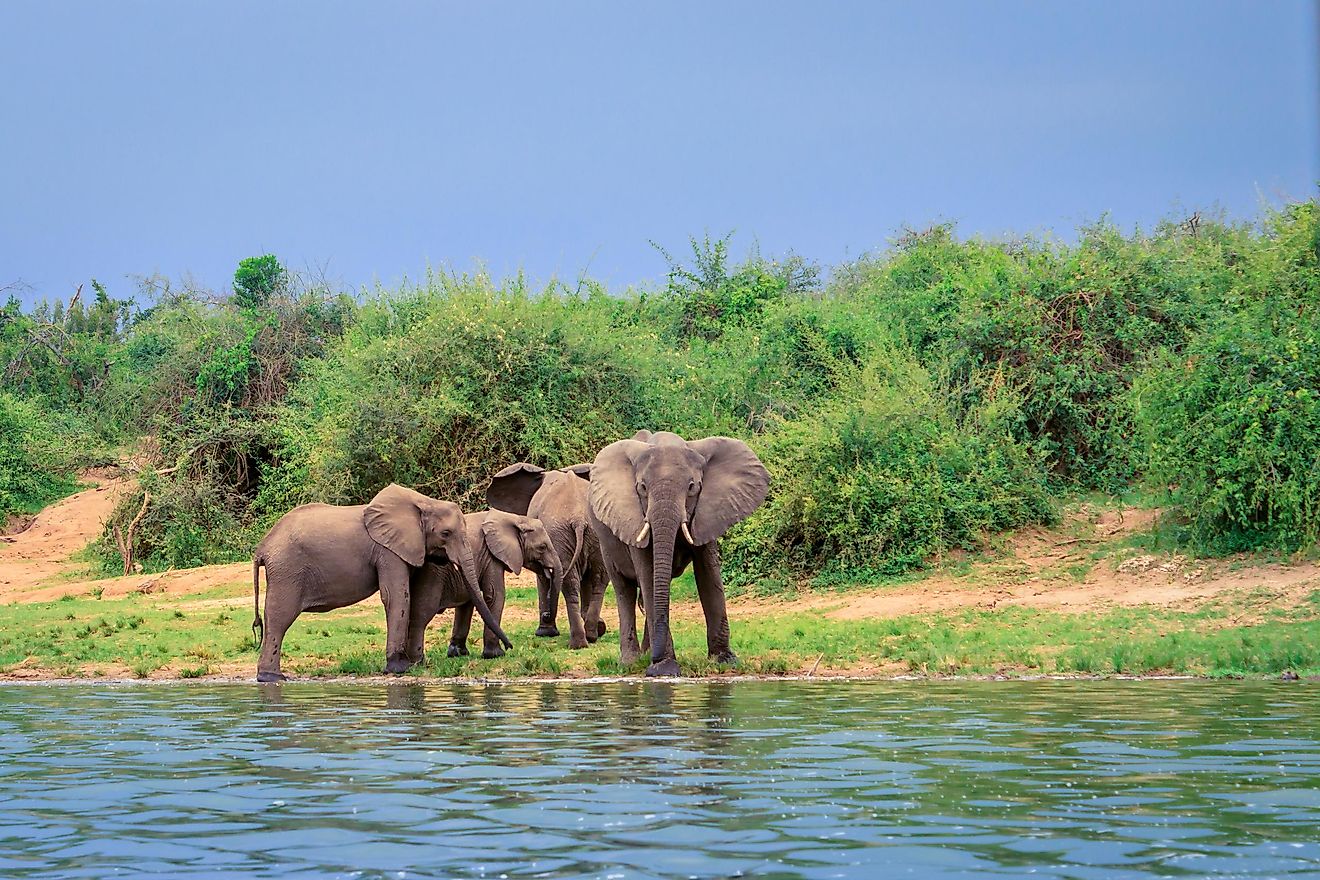The Largest Lakes in Africa

- Lake Victoria is the largest freshwater body in Africa and the second largest in the world, smaller only than Lake Superior, which is one of North America's Great Lakes.
- The water of Lake Turkana is considered unfit for human consumption and cannot be used by humans or animals.
- Lake Tanganyika holds 4,500 cubic miles of water and covers an area of 12,700 square miles. Its deepest point is 4,820 feet, while its average depth is 1,870 feet.
Africa is home to some of the world’s largest lakes. Africa’s largest lakes are located in the Great Lake region and are centered around the East African Rift. The Great Lakes region in Africa accounts for 25% of the world's unfrozen fresh water. These are the largest lakes in Africa.
9. Lake Edward
Lake Edward is the smallest of the Great Lakes of Africa. It is located between Uganda and the Democratic Republic of the Congo, and it covers an area of 898 square miles. The lake has a capacity of 9.5 cubic miles of water. Its deepest point is 367 feet, while the average depth is 56 feet.
8. Lake Kivu
Lake Kivu is located between the Democratic Republic of the Congo and Rwanda. Its main outlet is the Ruzizi River, which flows into Lake Tanganyika. It covers an area of 1,040 square miles, has a maximum depth of 1,575 feet and an average depth of 787 feet. It has a capacity of 120 cubic miles of water.
7. Lake Mweru
Lake Mweru is a fresh water lake located between Zambia and the Democratic Republic of the Congo. It is located on the longest arm of the Congo River and forms 68 miles of the Democratic Republic of the Congo's border with Zambia. It has a surface are of 1,980 square miles. It max depth is 89 feet, while its average depth is 25 feet.
6. Lake Rukwa
Lake Rukwa is located in southwestern Tanzania and covers a surface area of approximately 2,220 square miles. The lake experiences fluctuation in its size due to seasonal streams, which are its main source of water. History suggests that the lake once linked Lake Tanganyika to Lake Malawi. The Lake is 110 miles long and 20 miles wide.
5. Lake Albert
Lake Albert is located between Uganda and Congo. It has a surface area of 2,000 square miles and has a capacity of 32 cubic miles of water. Its average depth is 82 feet, while its deepest point is 167 feet. It is approximately 100 miles long and 19 miles wide. Its primary source of water is the Victoria Nile.
4. Lake Turkana
Lake Turkana in northern Kenya is the largest permanent desert lake, and the largest alkane lake. It is the world's fourth largest saltwater lake and the 24th largest lake in the world. The water of Lake Turkana is considered unfit for human consumption and cannot be used by humans or animals. It has a surface area of 2,473 square miles, a maximum depth of 358 feet, and an average depth of 99 feet.
3. Lake Nyassa
Lake Nyasa is locally known as Lake Malawi in Malawi, and Lago Niassa in Mozambique, is located between Tanzania, Mozambique, and Malawi. It is the second deepest in Africa,with a maximum depth of 2,316 feet and an average depth of 958 feet. It has an area of 11,400 square miles and holds 2,000 cubic miles of water. It is the ninth-largest lake in the world.
2. Lake Tanganyika
Lake Tanganyika is the longest freshwater lake in the world. It is located between Tanzania, Burundi, the Democratic Republic of the Congo, Zambia, although most of the lake is situated in Burundi and Tanzania. It is the second largest lake by volume, second deepest, and second oldest. In all cases, only Lake Baikal in Russia is larger. Lake Tanganyika holds 4,500 cubic miles of water and covers an area of 12,700 square miles. Its deepest point is 4,820 feet, while its average depth is 1,870 feet.
1. Lake Victoria
Lake Victoria is the largest freshwater body in Africa and the second largest in the world, smaller only than Lake Superior, which is one of North America's Great Lakes. The lake is located between Kenya, Tanzania, and Uganda, although Tanzania holds the largest share. Lake Victoria receives its water from rainfall and several rivers, including the Nile. It covers a surface area of 26,600 square miles, has a depth of 272 feet at its deepest point, and an average depth of 130 feet. It holds approximately 660 cubic miles of water.











